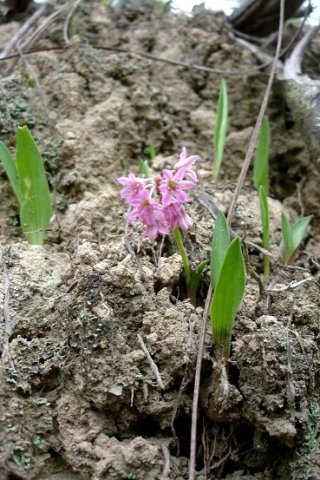Ledebouria cooperi

Author: Ivan Lätti
Photographer: Judd Kirkel Welwitch
This clump of Ledebouria cooperi plants, commonly known as Cooper's squill, seems to have escaped destruction through trampling by cattle in a muddy spot of mountain grassland. The misfortune of the plants provides an opportunity to view an ovoid bulb and some roots in addition to the above-ground parts. These bulbs also flesh out to become globose. An idea can also be formed about the normal depth of the bulb in the ground. The plant grows to about 25 cm.
The erect leaves are broadly lance-shaped, fresh green with faint purple markings on their outer surfaces. The plants shown here all have only one or two leaves.
The inflorescence is a dense raceme of small, pink, star-shaped flowers. The tepals of the flowers in picture have darker pink, longitudinal lines down the centre. The raceme seen here is carried upright, unlike many Ledebouria inflorescences with soft scapes that tend to sprawl. Prominently spread yellow anthers and a green ovary at the flower base can be seen in some of the flowers in the photo. Blooming occurs from before midspring through summer.
The distribution of this species covers most of the eastern half of South Africa, occurring in all provinces apart from the Western Cape. It also grows in in some neighbouring countries. The plants were seen in late November, the rainy season, in the Mkhomazi Wilderness Area of the KwaZulu-Natal Drakensberg.
The habitat is grassland, often in moist places, typical cattle land. The habitat population is deemed of least concern early in the twenty first century (Manning, 2009; Germishuizen and Clarke, 2003; Pooley, 1998; Van Wyk and Malan, 1997; iNaturalist; http://redlist.sanbi.org).

